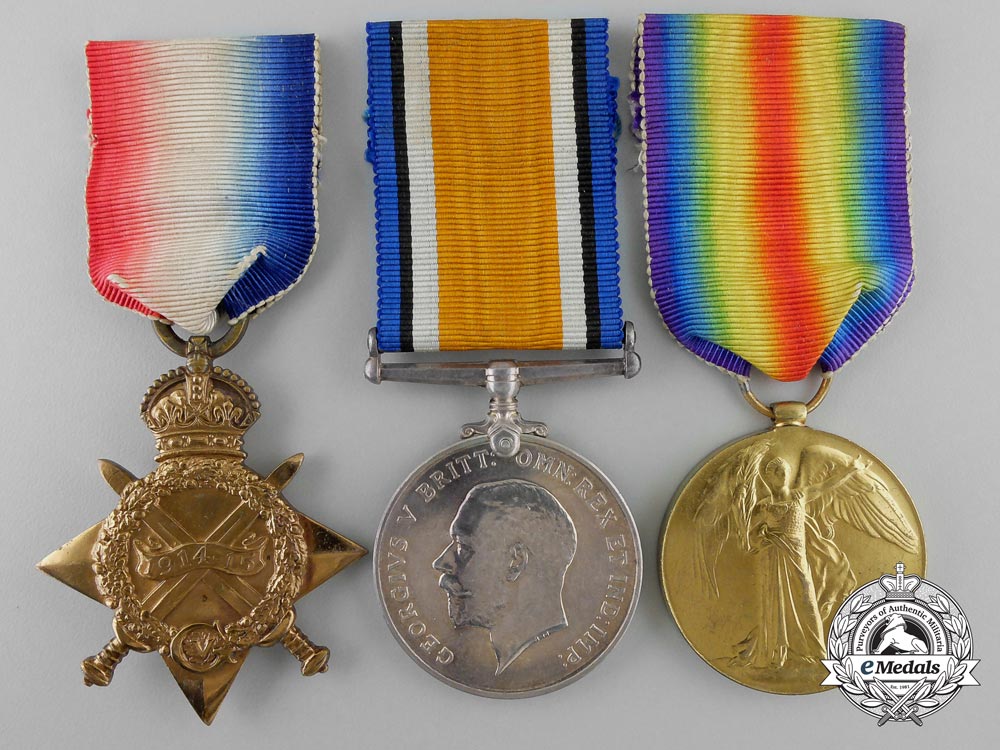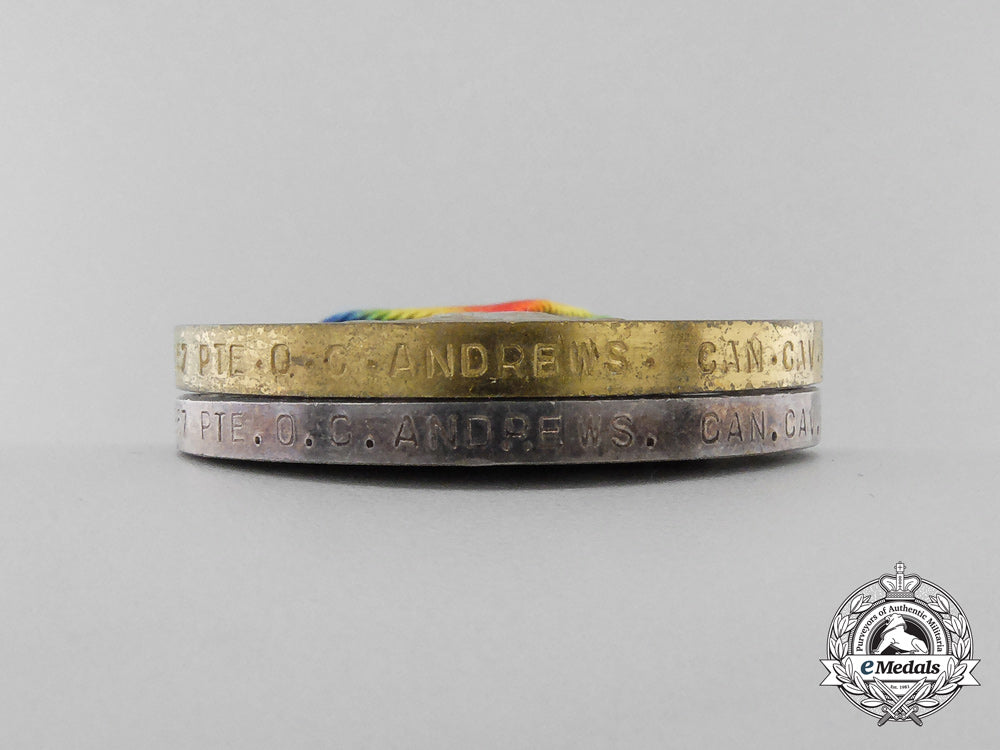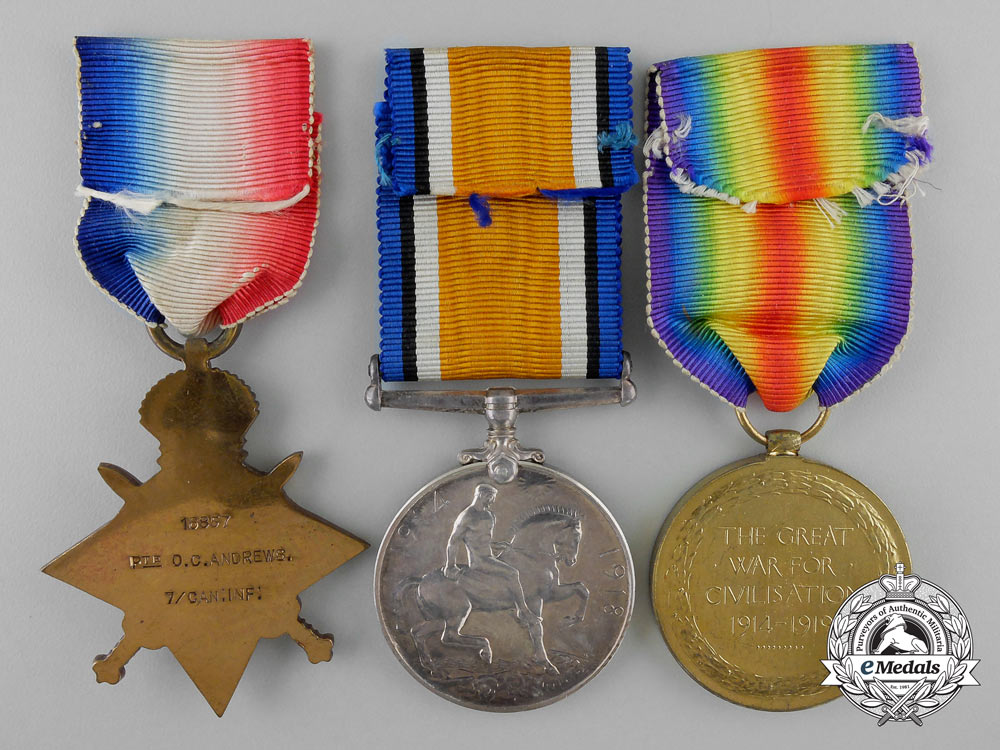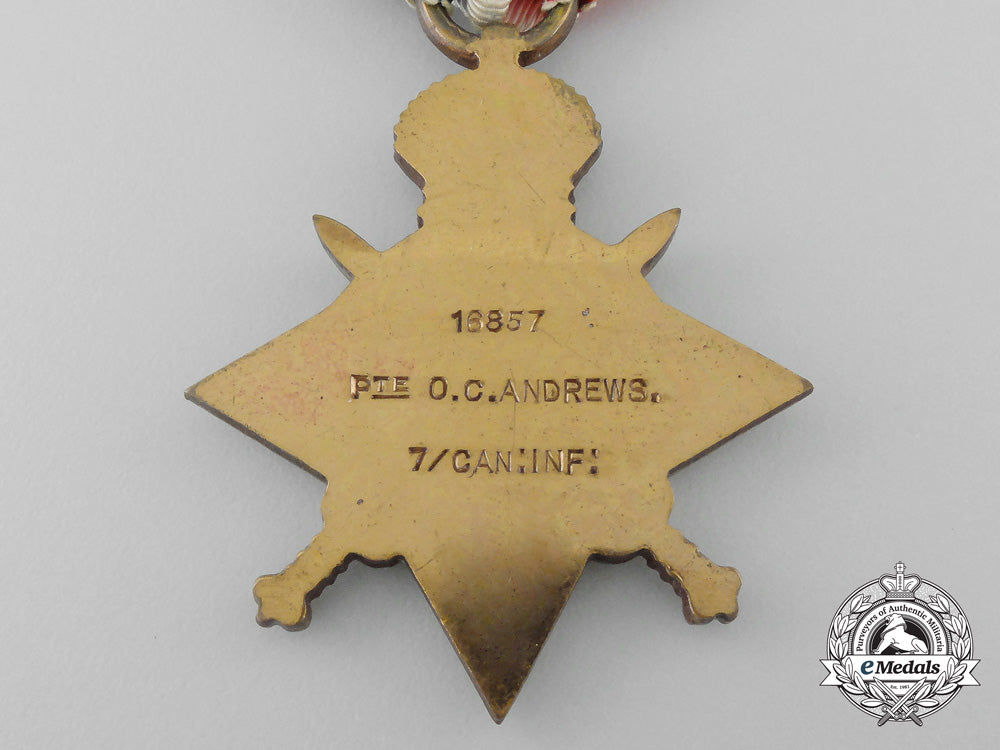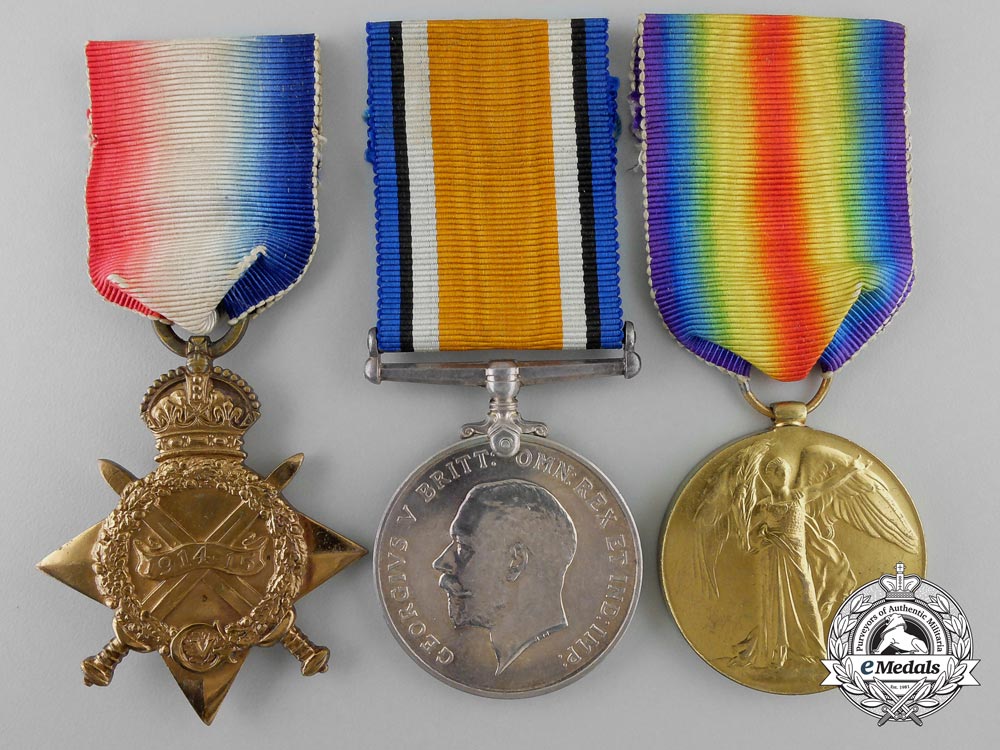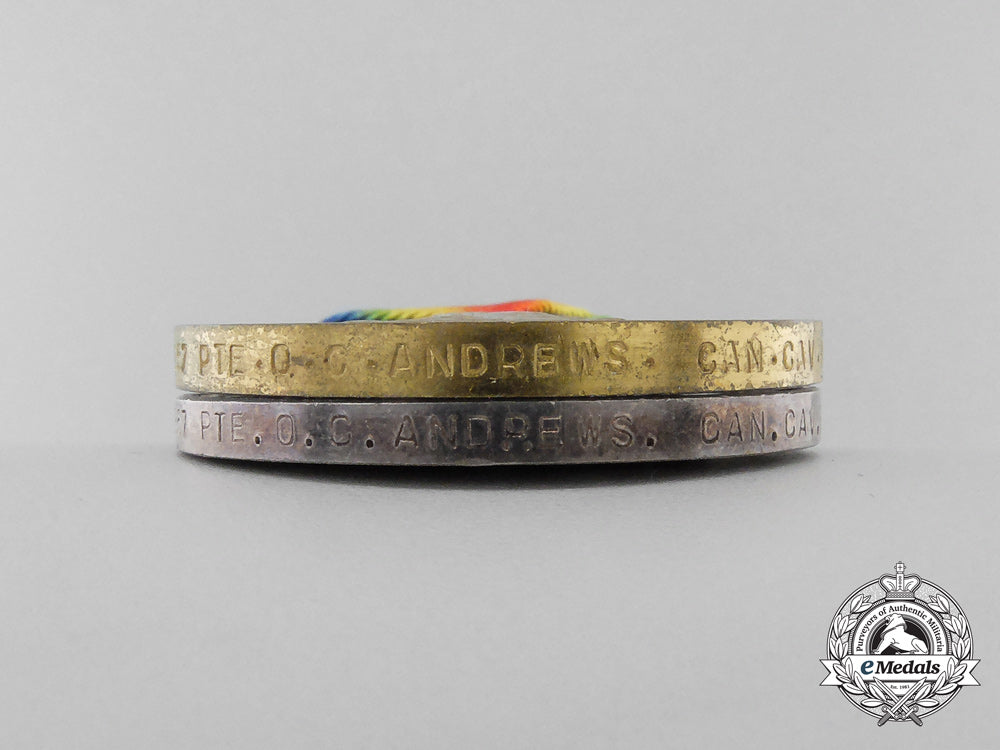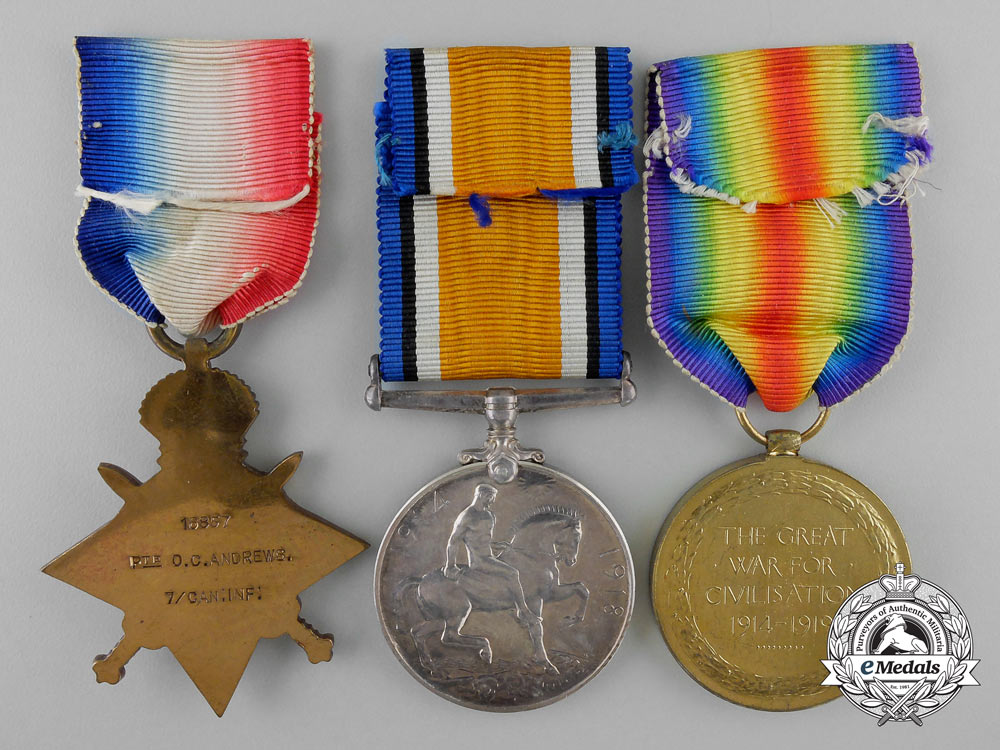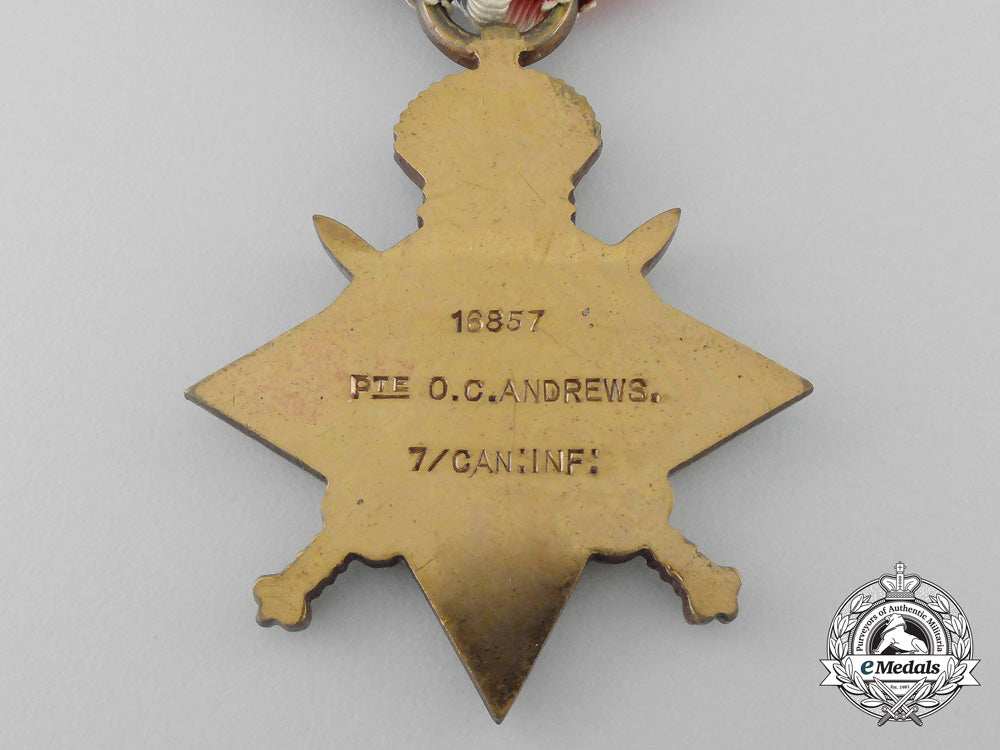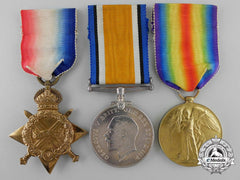
LOADING ...
In response to evolving domestic opinion, eMedals Inc has made the conscious decision to remove the presentation of German Third Reich historical artifacts from our online catalogue. For three decades, eMedals Inc has made an effort to preserve history in all its forms. As historians and researchers, we have managed sensitive articles and materials with the greatest of care and respect for their past and present social context. We acknowledge the growing sentiments put forth by the Canadian public and have taken proactive actions to address this opinion.
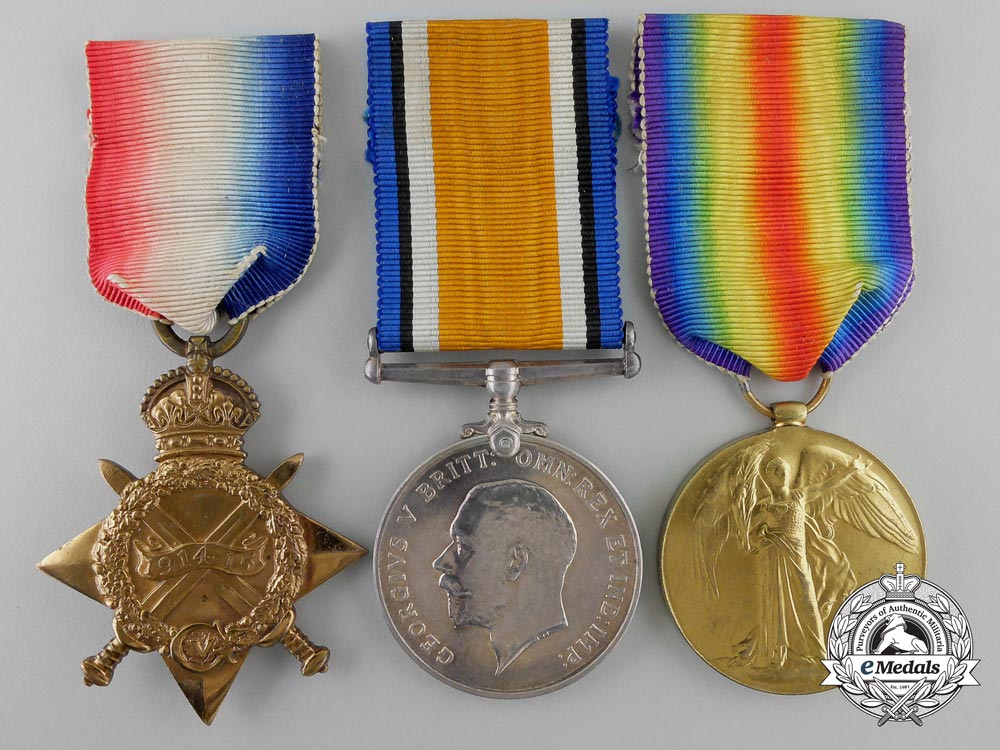
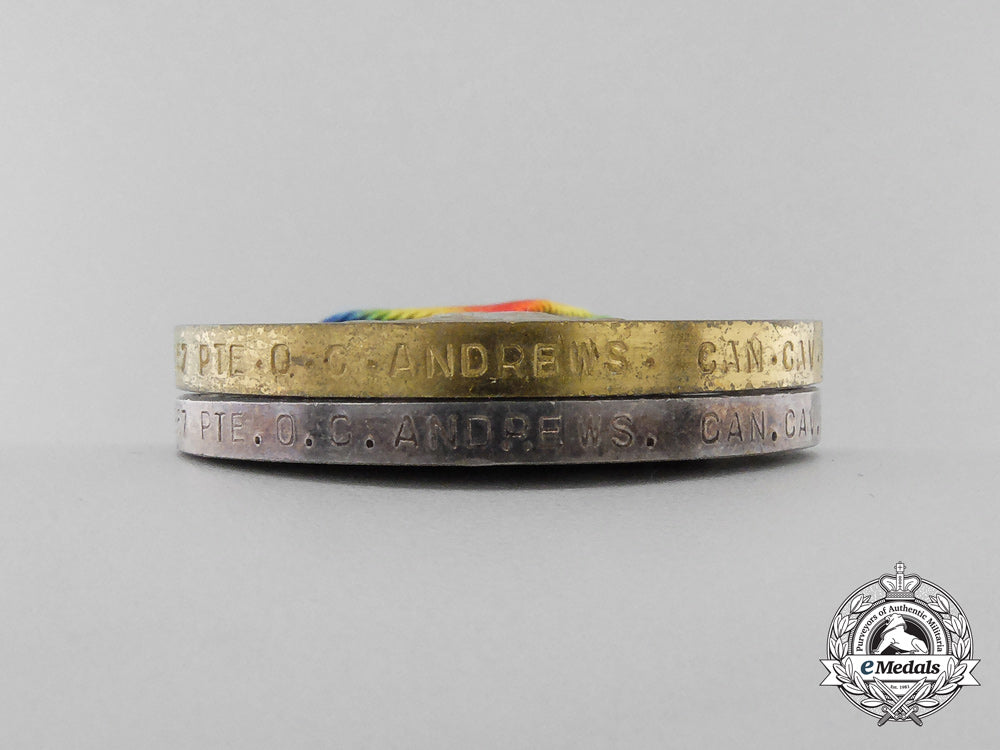
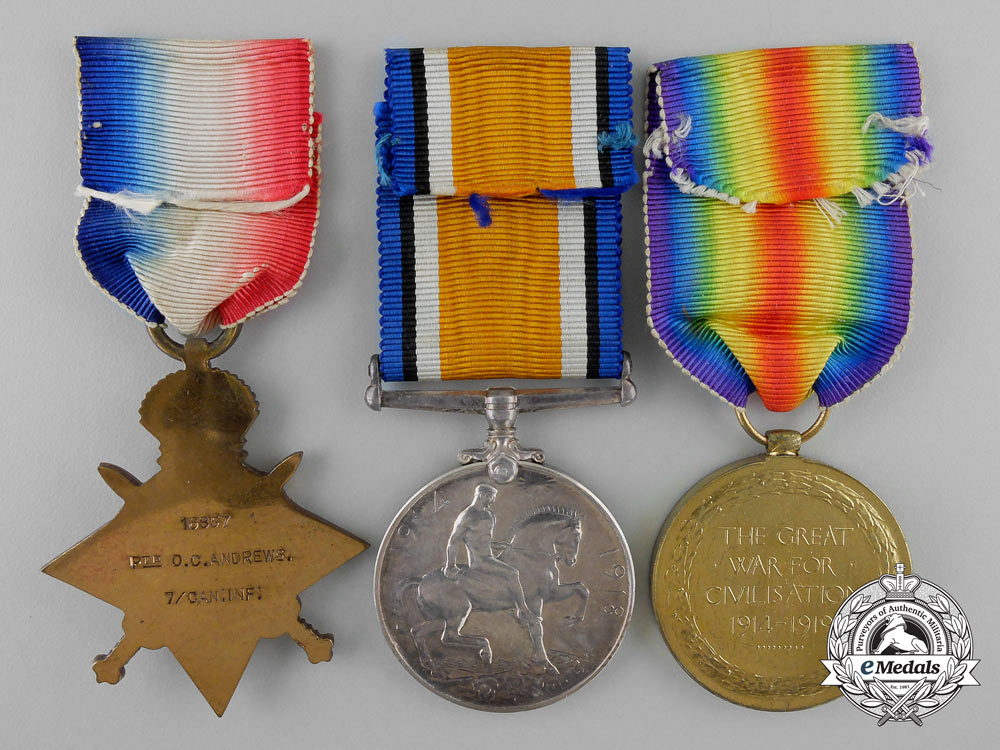
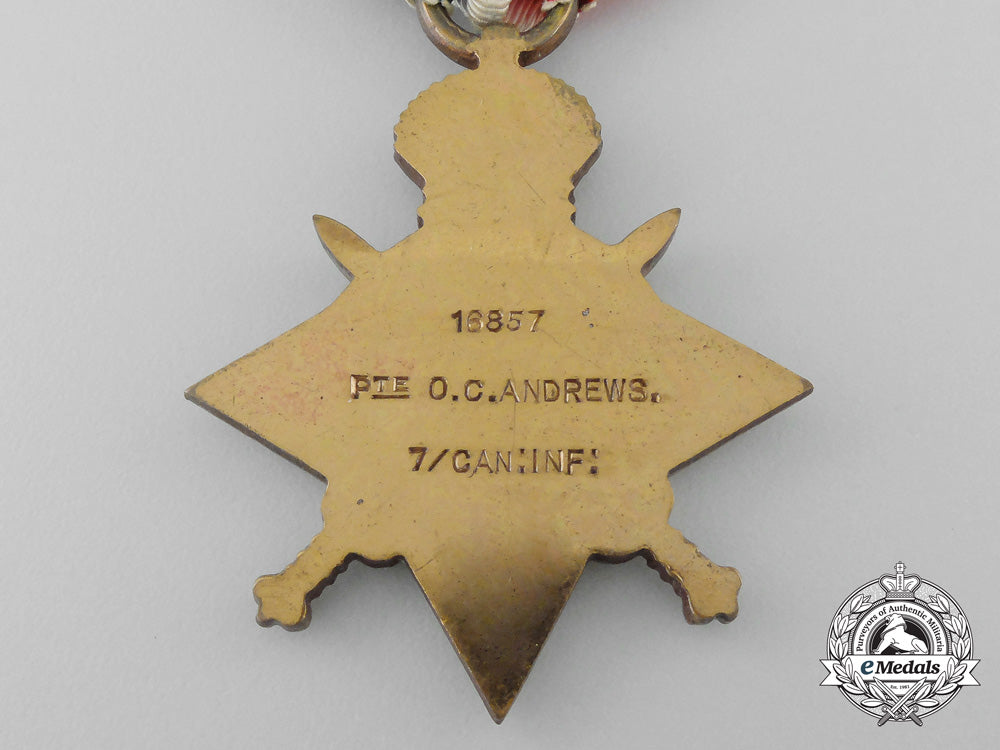
A First War Medal Trio To The 7Th Infantry Battalion; Canadian Cavalry Brigade
A First War Medal Trio To The 7Th Infantry Battalion; Canadian Cavalry Brigade
SKU: ITEM: C4065
Current Bid:
Your Max Bid:
Bid History:
Time Remaining:
Couldn't load pickup availability
Shipping Details
Shipping Details
eMedals offers rapid domestic and international shipping. Orders received prior to 12:00pm (EST) will be shipped on the same business day.* Orders placed on Canadian Federal holidays will be dispatched the subsequent business day. Courier tracking numbers are provided for all shipments. All items purchased from eMedals can be returned for a full monetary refund or merchandise credit, providing the criteria presented in our Terms & Conditions are met. *Please note that the addition of a COA may impact dispatch time.
Shipping Details
eMedals offers rapid domestic and international shipping. Orders received prior to 12:00pm (EST) will be shipped on the same business day.* Orders placed on Canadian Federal holidays will be dispatched the subsequent business day. Courier tracking numbers are provided for all shipments. All items purchased from eMedals can be returned for a full monetary refund or merchandise credit, providing the criteria presented in our Terms & Conditions are met. *Please note that the addition of a COA may impact dispatch time.
Description
Description
1914-15 Star (16857 Pte O.C. ANDREWS. 7/CAN:INF:); British War Medal (16857 PTE. O.C. ANDREWS. CAN.CAV. BDE); and Victory Medal (16857 PTE. O.C. ANDREWS. CAN.CAV. BDE.). Naming is officially impressed. Un-mounted, original ribbons, contact marks, very fine.
Footnote: Oscar Cecil Andrews was born on May 9, 1894 in Brackley, Northamptonshire, England. He signed his CEF Attestation Paper as a Private (16857) with the 7th Infantry Battalion "1st British Columbia Regiment", on September 23, 1914 at Valcartier Camp, at the age of 20, naming his next-of-kin as his father, C.J. Andrews of London, England, stating that he belonged to an Active Militia (un-named), that he was Single and that his trade was that of Bank Clerk. It was noted during his medical examination that he had a birthmark on his left shoulder. The Battalion was raised in British Columbia and mobilized at Camp Valcartier, Quebec under the authority of P.C.O. 2067, August 6, 1914, sailing on October 3, 1914 from Quebec City, Quebec aboard the S.S. Ruthenia, with a strength of 47 officers and 1,176 other ranks, under the command of Lieutenant-Colonel W. Hart-McHarg. He was transferred to the 6th Infantry Battalion at Larkhill on December 20, 1914, followed by a transfer to the 1st Canadian Divisional Cavalry in France on August 4, 1915. Andrews was admitted to No. 1 Field Ambulance on January 11, 1916 with a case of "diarrhoea" but returned to duty on the 13th. He was appointed a Cook with the 1st Divisional Canadian Cavalry on March 3, 1916 and attached to the 2nd Assistant Provost Marshal from March 25 to April 22, 1916, before rejoining his unit. In his records, it was noted that the 1st Divisional Canadian Cavalry was designated to form part of the future Canadian Corps Cavalry Regiment, on May 31, 1916. Andrews was admitted to No. 17 Casualty Clearing Station on July 12, 1916, transferred the same day and admitted to No. 25 General Hospital at Hardelot, where the doctor declared him to have "V.D.H." (Valvular Disease of the Heart), noting the "dilations of myocarchin & pericardial adhesions". He was transferred to Mont de Cats on July 14th, then transferred to No. 1 Convalescent Depot at Boulogne for a ten day stay, from July 16th to July 26th, before being discharged to Base Details at Le Havre on the 27th. However, the doctors decided to declare him "Unfit for Base Details". One month later, he arrived at the Canadian Base Depot, where he was officially designated Classified "C" (for Home Service in Canada only) by a Medical Board on August 26, 1916. At this point, he was transferred to the Canadian Casualty Assembly Centre at Folkestone, where the doctor noted his "neurasthenia" (mechanical weakness of the actual nerves). In the Proceedings of a Medical Board, dated August 27, 1916 at Folkestone, the doctor noted that Andrews had been in France for fifteen months when he had an accident with a horse. A subsequent visit to the County of London War Hospital, Epsom on September 26, 1916 revealed that he had a severe attack of nasal haemorrhage, caused by a small mass of adenoids. In the Proceedings of a Medical Board, dated October 24, 1916 at Epsom, the doctor noted that Andrews suffered from a case of "Shell Shock" incurred on June 23, 1916 and that the soldier "does not sleep well". In a another Proceedings of a Medical Board, dated October 12, 1917 at St. Martins Place, the doctor went on at length about Andrews' health, in regards to the horse accident and the battle incurred shell shock: "In France June 1915 - August 1916. Returned following a kick by a horse, which knocked him down causing no definite injury but along with (the) shell shock was the final cause for sending him back to England. He complains now that excitement & great exertion causes shortness of breath. Carrying a pack & bandolier gives him a feeling of distress and compression. Unable to do marches with full equipment in this account. No organic lesion. Slightly nervous - condition otherwise good." Andrews was attached to the Department of the General Auditor in London, from February 16 to September 18, 1917, then struck off strength upon return to the Canadian Reserve Cavalry Regiment, declared Category "A" (Unfit for General Service). He was posted to the Canadian Corps Regimental Depot at the Canadian Corps Reinforcement Camp on October 17th, then placed on command for a second time to the Department of the General Auditor in London, from October 30, 1917 to February 20, 1918. He was struck off strength to the General Depot for the purpose of demobilization, on January 21, 1919 and posted to the Canadian Corps Camp Rhyl, Military District No. 11 at Witley on February 9th, then posted to the Canadian Concentration Camp at Kinmel Park, North Wales for return to Canada. He left England aboard his His Majesty's Transport Belgic on February 23, 1919. Andrews received a medical examination at Victoria, British Columbia on March 17, 1919, in regards to his heart issues which started in July 1916. The doctor noted that he had been in hospital and at a convalescent camp until February 1917 but that he was "Now quite recovered, no disability". Andrews was taken on strength at Military District No. 11 Discharge Depot, at Hastings Park, Vancouver, British Columbia, on March 23, 1919 and was discharged upon demobilization on March 26th, entitled to wear the War Service Badge, Class "A", number 63733. For his First World War service, Andrews was awarded the 1914-15 Star, the British War Medal and the Victory Medal.
Description
1914-15 Star (16857 Pte O.C. ANDREWS. 7/CAN:INF:); British War Medal (16857 PTE. O.C. ANDREWS. CAN.CAV. BDE); and Victory Medal (16857 PTE. O.C. ANDREWS. CAN.CAV. BDE.). Naming is officially impressed. Un-mounted, original ribbons, contact marks, very fine.
Footnote: Oscar Cecil Andrews was born on May 9, 1894 in Brackley, Northamptonshire, England. He signed his CEF Attestation Paper as a Private (16857) with the 7th Infantry Battalion "1st British Columbia Regiment", on September 23, 1914 at Valcartier Camp, at the age of 20, naming his next-of-kin as his father, C.J. Andrews of London, England, stating that he belonged to an Active Militia (un-named), that he was Single and that his trade was that of Bank Clerk. It was noted during his medical examination that he had a birthmark on his left shoulder. The Battalion was raised in British Columbia and mobilized at Camp Valcartier, Quebec under the authority of P.C.O. 2067, August 6, 1914, sailing on October 3, 1914 from Quebec City, Quebec aboard the S.S. Ruthenia, with a strength of 47 officers and 1,176 other ranks, under the command of Lieutenant-Colonel W. Hart-McHarg. He was transferred to the 6th Infantry Battalion at Larkhill on December 20, 1914, followed by a transfer to the 1st Canadian Divisional Cavalry in France on August 4, 1915. Andrews was admitted to No. 1 Field Ambulance on January 11, 1916 with a case of "diarrhoea" but returned to duty on the 13th. He was appointed a Cook with the 1st Divisional Canadian Cavalry on March 3, 1916 and attached to the 2nd Assistant Provost Marshal from March 25 to April 22, 1916, before rejoining his unit. In his records, it was noted that the 1st Divisional Canadian Cavalry was designated to form part of the future Canadian Corps Cavalry Regiment, on May 31, 1916. Andrews was admitted to No. 17 Casualty Clearing Station on July 12, 1916, transferred the same day and admitted to No. 25 General Hospital at Hardelot, where the doctor declared him to have "V.D.H." (Valvular Disease of the Heart), noting the "dilations of myocarchin & pericardial adhesions". He was transferred to Mont de Cats on July 14th, then transferred to No. 1 Convalescent Depot at Boulogne for a ten day stay, from July 16th to July 26th, before being discharged to Base Details at Le Havre on the 27th. However, the doctors decided to declare him "Unfit for Base Details". One month later, he arrived at the Canadian Base Depot, where he was officially designated Classified "C" (for Home Service in Canada only) by a Medical Board on August 26, 1916. At this point, he was transferred to the Canadian Casualty Assembly Centre at Folkestone, where the doctor noted his "neurasthenia" (mechanical weakness of the actual nerves). In the Proceedings of a Medical Board, dated August 27, 1916 at Folkestone, the doctor noted that Andrews had been in France for fifteen months when he had an accident with a horse. A subsequent visit to the County of London War Hospital, Epsom on September 26, 1916 revealed that he had a severe attack of nasal haemorrhage, caused by a small mass of adenoids. In the Proceedings of a Medical Board, dated October 24, 1916 at Epsom, the doctor noted that Andrews suffered from a case of "Shell Shock" incurred on June 23, 1916 and that the soldier "does not sleep well". In a another Proceedings of a Medical Board, dated October 12, 1917 at St. Martins Place, the doctor went on at length about Andrews' health, in regards to the horse accident and the battle incurred shell shock: "In France June 1915 - August 1916. Returned following a kick by a horse, which knocked him down causing no definite injury but along with (the) shell shock was the final cause for sending him back to England. He complains now that excitement & great exertion causes shortness of breath. Carrying a pack & bandolier gives him a feeling of distress and compression. Unable to do marches with full equipment in this account. No organic lesion. Slightly nervous - condition otherwise good." Andrews was attached to the Department of the General Auditor in London, from February 16 to September 18, 1917, then struck off strength upon return to the Canadian Reserve Cavalry Regiment, declared Category "A" (Unfit for General Service). He was posted to the Canadian Corps Regimental Depot at the Canadian Corps Reinforcement Camp on October 17th, then placed on command for a second time to the Department of the General Auditor in London, from October 30, 1917 to February 20, 1918. He was struck off strength to the General Depot for the purpose of demobilization, on January 21, 1919 and posted to the Canadian Corps Camp Rhyl, Military District No. 11 at Witley on February 9th, then posted to the Canadian Concentration Camp at Kinmel Park, North Wales for return to Canada. He left England aboard his His Majesty's Transport Belgic on February 23, 1919. Andrews received a medical examination at Victoria, British Columbia on March 17, 1919, in regards to his heart issues which started in July 1916. The doctor noted that he had been in hospital and at a convalescent camp until February 1917 but that he was "Now quite recovered, no disability". Andrews was taken on strength at Military District No. 11 Discharge Depot, at Hastings Park, Vancouver, British Columbia, on March 23, 1919 and was discharged upon demobilization on March 26th, entitled to wear the War Service Badge, Class "A", number 63733. For his First World War service, Andrews was awarded the 1914-15 Star, the British War Medal and the Victory Medal.
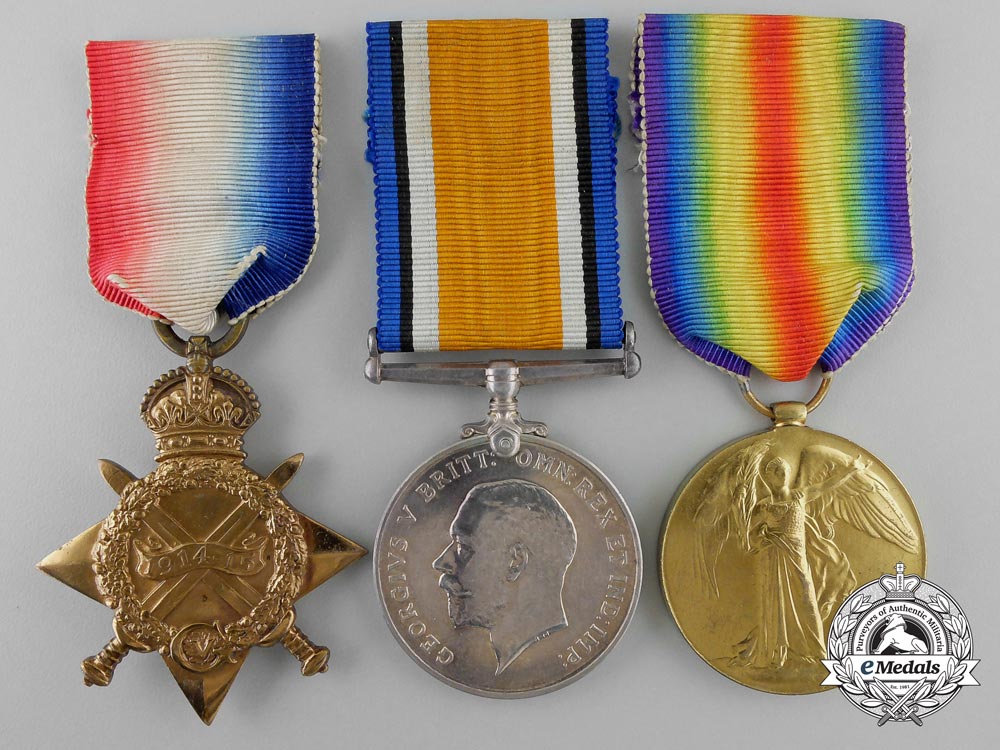
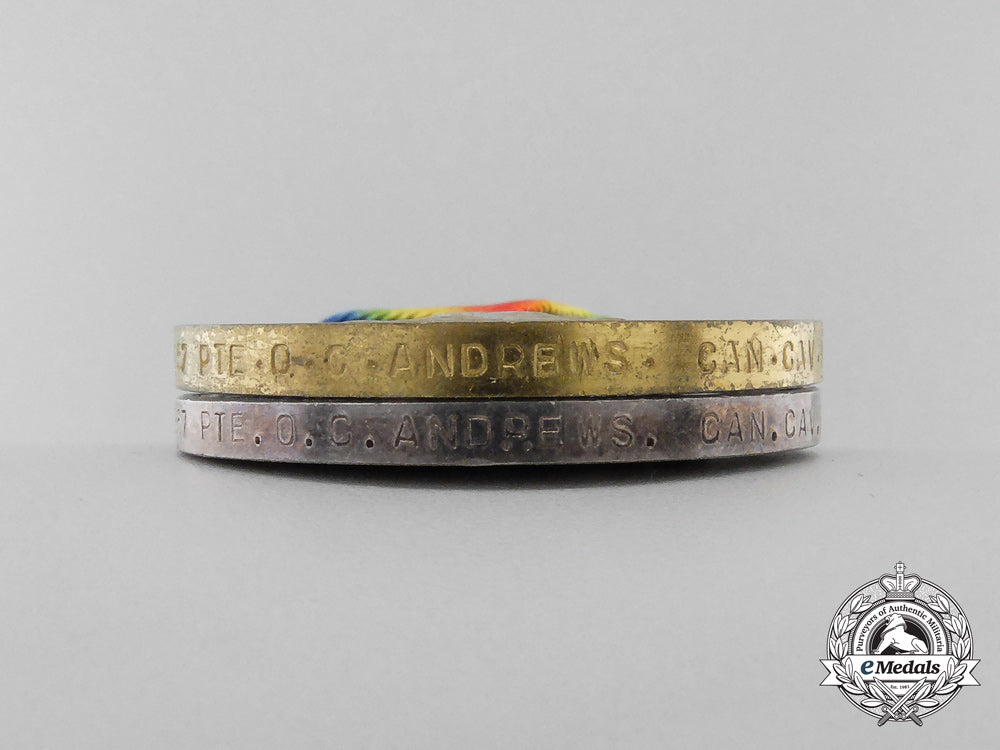
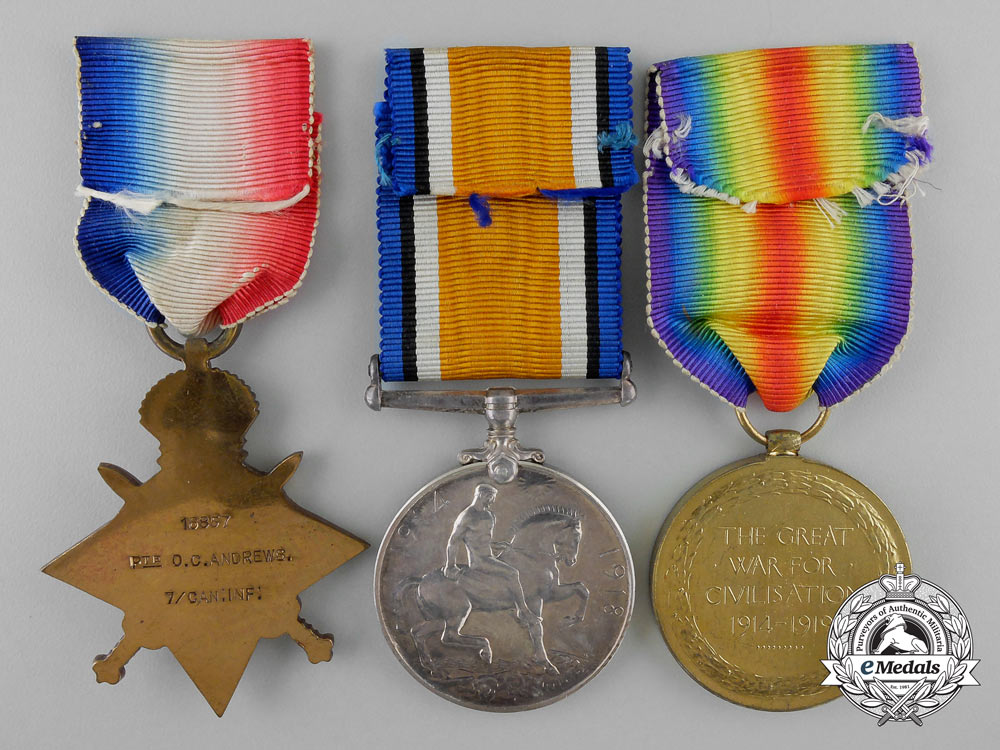
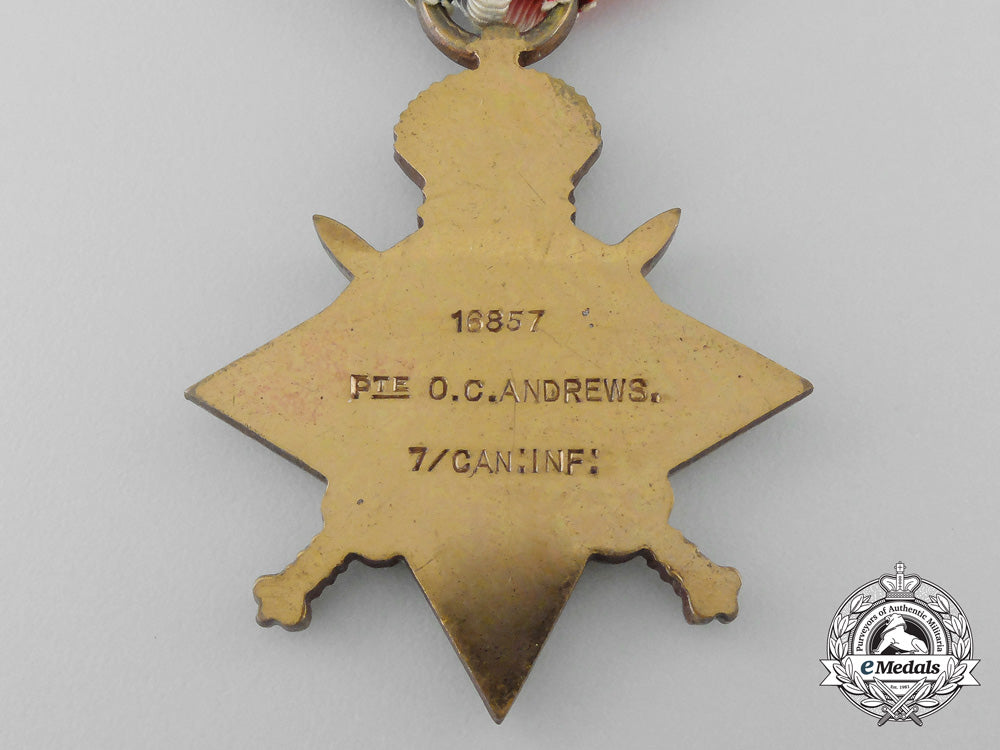
You May Also Like
Germany, Wehrmacht. A Rare Panzer Assault Badge, Special Grade for 50 Engagements, by Gustav Brehmer
M0044-250
Germany, Heer. A Set of Infanterie-Regiment 46 Hauptmann Shoulder Boards
M0076-147
Germany, SS. The Knight’s Cross Winners of the Waffen-SS, Volume 4
M0076-152
Germany, HJ. A 1938 National Trade Competition Victor’s Badge, Gold Grade in Case, By Gustav Brehmer
G60096
Italy, Republic. An Order of Merit of the Italian Republic, Grand Cross Set by Johnson, 1970
EU23677
-
Germany, Wehrmacht. A Rare Panzer Assault Badge, Special Grade for 50 Engagements, by Gustav Brehmer
M0044-250
Add to CartRegular price $4,500 USDRegular price $0 USD Sale price $4,500 USDUnit price / per -
Germany, Heer. A Set of Infanterie-Regiment 46 Hauptmann Shoulder Boards
M0076-147
Add to CartRegular price $120 USDRegular price $0 USD Sale price $120 USDUnit price / per -
Germany, SS. The Knight’s Cross Winners of the Waffen-SS, Volume 4
M0076-152
Add to CartRegular price $110 USDRegular price $0 USD Sale price $110 USDUnit price / per -
Germany, HJ. A 1938 National Trade Competition Victor’s Badge, Gold Grade in Case, By Gustav Brehmer
G60096
Add to CartRegular price $3,950 USDRegular price $0 USD Sale price $3,950 USDUnit price / per -
Italy, Republic. An Order of Merit of the Italian Republic, Grand Cross Set by Johnson, 1970
EU23677
Add to CartRegular price $950 USDRegular price $0 USD Sale price $950 USDUnit price / per
Do you have a similar item you are interested in selling?
Please complete the form and our client care representatives will contact you.
Sell Item